The Haircare Efficacy Research of Prinsepia Utilis Oil
Cai Bindi,Zhang Shaonuan,Lu Shuqi
Guangzhou Silkfrom Cosmetics Co.,Ltd.,China;
Zhou Ji
Yunnan Ingredi Biotech Co.,Ltd.,China;
Ma Zhanlin
Yunnan Ingredi Biotech Co.,Ltd.,China
Abstract To research the hair-care efficacy of prinsepia utilis oil.We evaluated the haircare efficacies of prinsepia utilis oil through methods such as differential scanning calorimetry (DSC),measuring difficulty level and mechanical resistance against combing of wet and dry hair,scanning electron microscopy (SEM).According to the analysis of differential scanning calorimetry (DSC),the testing sample has repairing effect on the hair α-keratin damage induced by heated blowing.According to the pictures of scanning electron microscopy (SEM),The test results indicate the repairing or resisting thermal damage effects induced by hair drier) of prinsepia utilis oil.By comparison with the blank control group,the strength and work of dry comb and wet comb were significantly reduced in the samples tested with 2% prinsepia utilis oil concentration(P<0.05).This indicates the testing sample has the efficacy to improve the easiness of combing and anti-tangle.And friction work is significantly reduced This indicates the smoothing efficacy of the testing sample.and the hair scales status is better;this indicates hair scales repairing efficacy of testing sample.Conclusion: PRINSEPIA UTILIS OIL has the effect of repairing hair scales,resisting thermal damage caused by hair dryer,easy to comb,anti-tangle,smoothing.
Key words PRINSEPIA UTILIS OIL,repairing,hair,smoothing
Prinsepia utilis Royle is a shrub from Prinsepia genus,Rosaceae family.The recognized Chinese nameis ‘Zong hua bian he mu’.It is also called ‘Qing cijian’ and ‘Da you guo’.The Naxi,Tibetan and Mosuo people regard it as ‘auspicious tree’ and ‘king of flower’.Prinsepia utilis grows on slopes,wasteland,roadside,and shaded shrubs at an altitude of 1,800~3,000 meters of Yunnan,Sichuan,Guizhou,etc.in China.Lijiang and surrounding areas are the major origin in Yunnan.According to statistics,the existing wild distribution area of prinsepia utilis in Lijiang is about 300,000 mu (approximately 20,000 hm2).
Prinsepia utilis oil is the oil derived from dried prinsepia utilis seeds and has been an edible oil for local residents for years.It is also widely used in healthcare,skincare,beauty care industry because ofits effectiveness[1].The detection and analysis results of Gaschromatography-mass spectrometry (GC-MS)showed that the content of unsaturated fatty acid in the oil is more than 70%,the content of oleic acid is 33.38%,and the content of linoleic acid is 40.82%.According to the ratio of three fatty acids,namely,mono unsaturated fat fatty acid,poly unsaturated fat fatty acid and saturated fatty acid,the content ratio of these three fatty acids in prinsepia utilis oil is 1∶1∶0.8,which is very close to the composition of human fatty acid 1∶1∶1.It is reported the oil has skincare efficacies of moisturizing,repairing skin barrier,[2]delaying aging[3,4].
Human hair not only has certain physiological functions,but also has increasingly prominent beautifying effect and social importance closely related to living standards.Haircare,hairdressing has become an indispensable part of people’s daily lives (work,social,etc.).Paying attention to the daily haircare and protecting hair to avoid hair damage seem to be much more important for consumers than before.Even though prinsepia utilis oil is widely usedin skincare industry,it is no such report regarding its haircare efficacies.
1 Materials and methods
1.1 Reagents and materials
PRINSEPIA UTILIS OIL (Ingredi Biotech Co.,Ltd.);10% SLES (sodium lauryl ether sulfate) solution(Basic Shampoo) (Shanghai Macklin Biochemical Co.,Ltd);Cyclopentasiloxane;Hair bundles and its spec:dyed hair bundles 27 cm×2.5 cm×6 g;Mildly damaged hair bundles (17 cm×1.5 cm×2.5 g free15 cm,ShanghaiCanyu Trading Company Ltd.);Mildly damaged hair bundles,2.5 g,6 inch.Shanghai Canyu Trading Company Ltd.);Hair rubber friction ring (Beijing Jinhongfan Trading Company Ltd.)
1.2 Apparatus and equipment
CHROMA METER CR-400,Analytical balance;SEM scanning electron microscopy,Scanning differential thermal analyzer DSC2.1.4;Multifunctional hair bundle tester/combing apparatus(fibra.one);Scanning Electron Microscope (ZEISS Sigma500)
1.3 Testing methods
1.3.1 Detection of fatty acids components of PRINSEPIA UTILIS OIL
Reference the 3rd method-Normalization method for determining the composition of fatty acids of GB5009.168—2016 National standard of food safety,detection of fatty acids in food’.
1.3.2 Hair protection efficacy test of prinsepia utilis oil against heat
1.3.2.1 Testing procedure of differential scanning calorimetry (DSC) on hair
Take 6 mildly damaged hair bundles,classify theminto 2 groups randomly,3 bundles for each of blank control group and testing group and treat them separately as follow in a constant temperature and humidity environment,with the temperature of (21 ± 1) ℃ and the humidity of 50% ± 10%:
Blank control group: Wash the mildly damaged hair bundles with 10% SLES solution and wipe the surface moisture of the hair with a towel.
Testing group: Wash the mildly damaged hair bundles with 10% SLES solution and wipe the surface moisture of the hair with a towel;apply prinsepia utilis oil (0.2 g for each bundle of hair) on the semi dry hair bundles,massage the hair bundles along the direction of hair scales for 3 min (Leave-in).
The control group and the testing group were respectively blown with a hair dryer for 3 minutes.
Cut the processed hair bundles into fragments of approximately 1.0 mm in length.Use the differential thermal analysis (DSC) apparatus to detect the DSC curve of hair and calculate the absorption peak temperature (Td) and average absorption peak area (Hd) within the temperature range of 230 ℃~250 ℃.
1.3.2.2 Testing procedure of hair scales scanning using scanning electron microscope
Take 4 hair bundles were randomly divided into 2 groups,2 bundles each in control group and sample group.1 mL 10%SLES were used for basic cleaning before the test;For the sample group,apply about 0.5 g prinsepia utilis oil (prinsepia utilis oil mass and hair mass 1∶5) and knead evenly for 3 min,stay for 2 min,and wash front and back 15 times.The control group was treated in the same way as the sample group.After completion,hang the hair beam at (26 ± 2) ℃;Take 2 hair strands in the control group and sample group were randomly selected for scanning electron microscopy.
1.3.3 Efficacies evaluation of prinsepia utilis oil on hair bundles regarding the degree of difficulty or easiness of combing,effects of anti-tangle,smoothing and repairing hair scales pretreatment of hair bundles
Prepare 20 hair bundles and classified them into 2 groups,10 for each group.Wet the hair bundles in(37.0± 2) °C water;Apply 1ml 10% SLES evenly on each group of hair bundles;Gently rub the hair till rich foams come up and last 1 min;Remove the oil stain from the surface to hair;Rinse the hair bundles under running water with constant flow rate;Comb the hair bundles 10 times on both sides of flat narrow tooth comb;Hang and naturally dry the hair bundlesin a constant temperature and humidity laboratory.
1.3.3.1 Efficacy evaluation of prinsepia utilis oil for easy combing of hair bundle—combing test on the dried hair
Take 6 mildly damaged hair bundles and randomly classify them into 2 groups,3 for each group;Treat the hair bundles separately following the below procedure:
Testing group: Apply sample (prinsepia utilis oil) 0.1 g/g on the pre-treated hair bundles,massage gently for 3 min,naturally dry the hair bundles and then test.
Blank control group: Apply reference substance 0.1 g/g on the pre-treated hair bundles,massage gently for 3 min,naturally dry the hair bundles and then test.
Hang and naturally dry the hair bundles after apply the sample/reference substance in a constant temperature and humidity laboratory of (21±1) ℃,(50±10)% RH.
Use fibra.one to measure the intensity and work reference value of combing the naturally dried hair bundles.
1.3.3.2 Efficacy evaluation of prinsepia utilis oil for anti-tangle of hair bundle—combing test on the wet hair
Take 6 mildly damaged hair bundles and randomly classify them into 2 groups,3 for each group;Treat the hair bundles separately following the below procedure:
Testing group: Apply sample (PRINSEPIA UTILIS OIL) 0.1g/g on the pre-treated hair bundles,massage gently for 3 min.
Blank control group: Apply reference substance 0.1 g/g on the pre-treated hair bundles,massage gently for 3 min.
Use fibra.one to measure the intensity and work reference value of combing the none-dried (wet)bundles.
1.3.3.3 Efficacy evaluation of prinsepia utilis oil for smoothing of hair bundle—friction test
Take 6 mildly damaged hair bundles and randomly classify them into 2 groups,3 for each group;Treat the hair bundles separately following the below procedure:
Testing group: Apply sample (PRINSEPIA UTILIS OIL) 0.1 g/g on the pre-treated hair bundles,massage gently for 3 min,naturally dry the hair bundles and then test.
Blank control group: Apply reference substance 0.1 g/g on the pre-treated hair bundles,massage gently for 3 min,naturally dry the hair bundles and then test.
Hang and naturally dry the hair bundles after apply the sample/reference substance in a constant temperature and humidity laboratory of (21±1) ℃,50±10% RH.
Use fibra.one to measure the friction work reference value of the naturally dried hair bundles.
1.3.3.4 Efficacy evaluation of prinsepia utilis oil for repairing hair scales of hair bundle---hair scales repairing efficacy test
1) Take 2 mildly damaged hair bundles (2.5 g,6inch) and randomly classify them into 2 groups,1 for each group;Cut a few hairs from the testing group and control group before treatment,and take electron microscopy photos (initial values);Treat the hair bundles separately following the below procedure:
Testing group: Apply sample (PRINSEPIA UTILIS OIL) 0.1 g/g on the pre-treated hair bundles,massage gently for 3 min,naturally dry the hair bundles and then test.
Blank control group: Apply reference substance 0.1 g/g on the pre-treated hair bundles,massage gently for 3 min,naturally dry the hair bundles and then test.
Hang and naturally dry the hair bundles after apply the sample/reference substance in a constant temperature and humidity laboratory of (21±1) ℃,50%±10% RH.
Cut a few hairs from the treated hair bundles and take electron microscopy photos (After applied sample/reference substance).
1.3.3.5 Test result data analysis
The intensity,work reference value of combing the wet and dried hair bundles,friction work value,status of hair scales is measured.Use EXCEL to conduct descriptive statistics analysis (including value,mean value,standard error,minimum and maximum values,etc) on these data and related variation values.Calculate the variation percentages of different groups after treatment.Use Shapiro-Wilk Test of SPSS software to carry out the significance test of normal distribution of data.It is normal distribution if both of the data of testing group and blank control group are Sig>0.01.Conductindependent sample t-test,testing standards α=0.05.Otherwise,conduct Mann Whitney U inspection,inspection standards α=0.05.
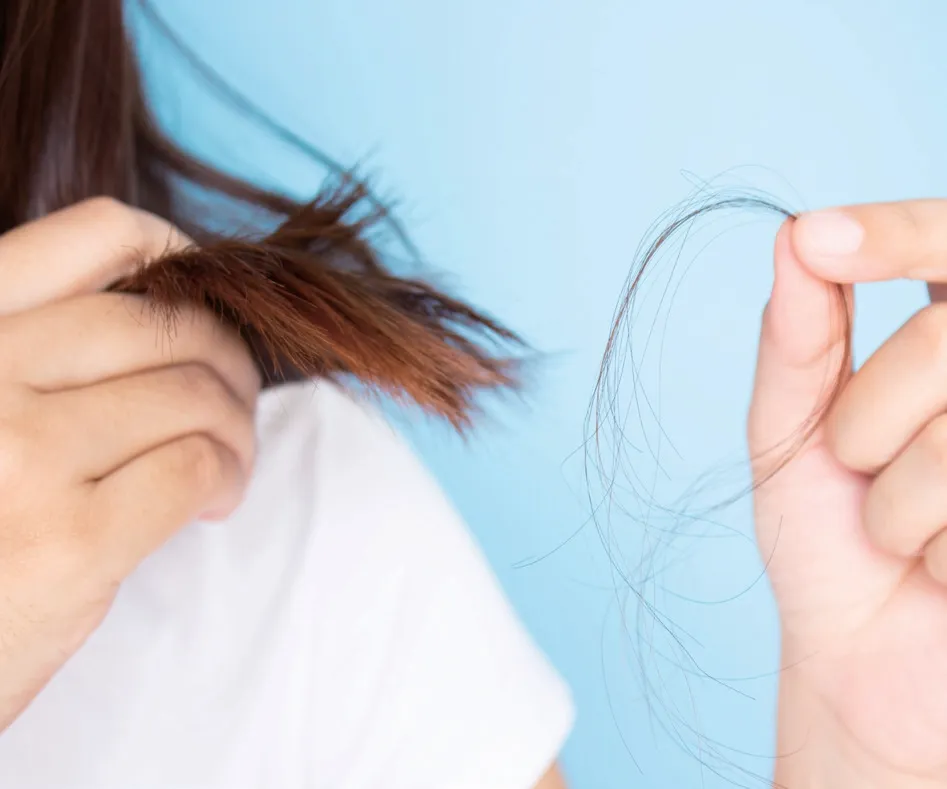
2 Results
2.1 Composition of fatty acids of prinsepia utilis oil
The test results are shown in Table 1.
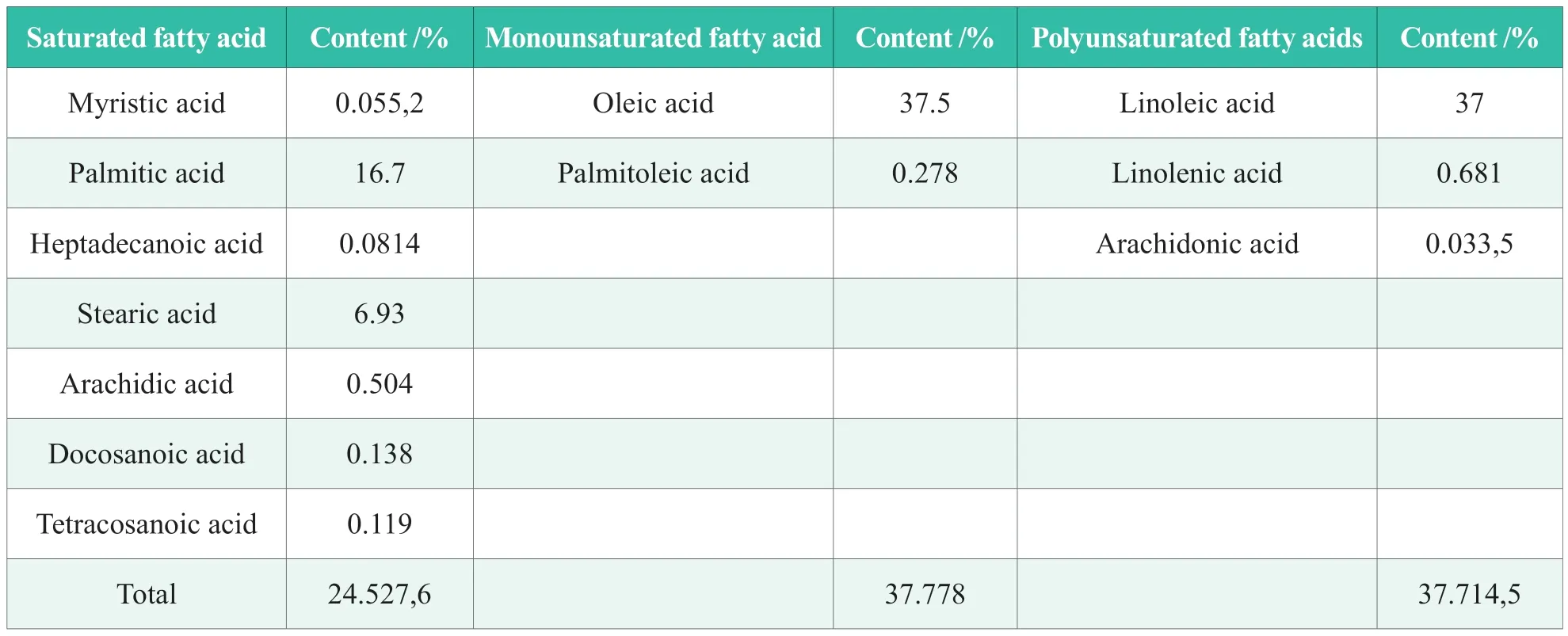
Table 1.Composition of fatty acids of prinsepia utilis oil
According to the test results in Table 1,the mass ratio of saturated fatty acids,monounsaturated fatty acids and polyunsaturated fatty acids in prinsepia utilis oil is close to the 1∶1∶1 structure of human fatty acids,which is conducive to skin absorption.
2.2 Hair protection efficacy test result of prinsepia utilis oil against heat
2.2.1 Test results and analysis of hair DSC test
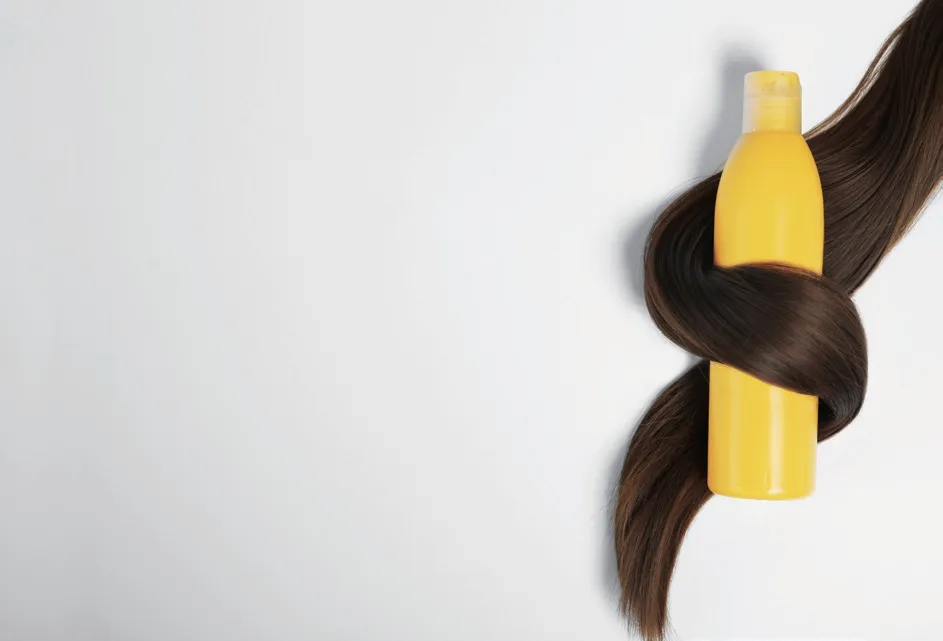
There is an endothermic peak marked as α-helix peak in the hair α-keratin DSC curve at (230~250) ℃.Peak temperature (Td) is defined as the denaturation temperature of the α-helix peak;Peak area (△Hd)is the enthalpy of transition,refer to energy required for the ɑ-helix peak denaturation (heat absorbed per gram of dry hair);△Hd is used to calculate RHC(relative helix content).RHC=100×(△Hd testing group/△Hd control group)%.The smaller the peak area of the testing group is the smaller the RHC is,and the greater the degree of ɑ-keratin damage is.
Analyze differential scanning calorimetry (DSC)of the above 2 groups hair bundles,the results of peak temperature,peak area,relative helix content of hair helix peak are as shown in Table 2.
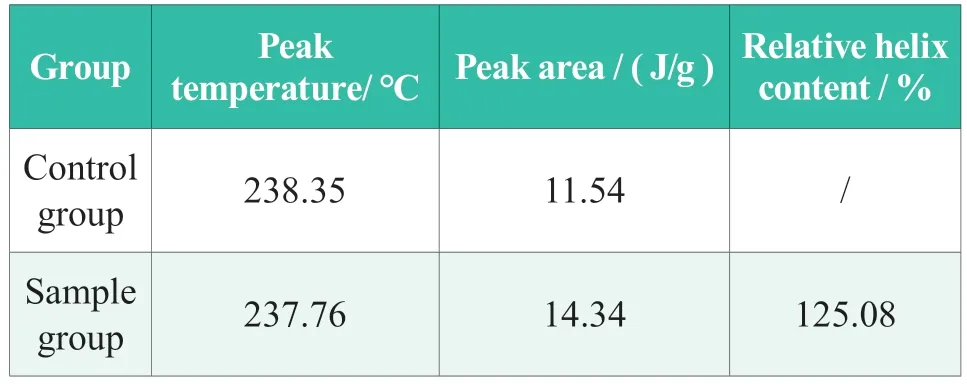
Table 2.Peak temperature,peak area,relative helix content of hair helix peak of the above 2 groups
Table 2 lists the endothermic peak values (Td),peak area (△Hd) and relative α-Helix content (RHC)of the DSC curve of blank control and testing groups at (230~250) ℃ that have been detected after thermal damage caused by hair drier. It can be seen that compared with the control group without prinsepia utilis oil,the denaturation temperature of the α-helix peak of testing groups (applied prinsepia utilis oil)has decreased;the α-helix peak area of testing groups has increased;Compared with the control group,the relative helix content was 125.08%,indicating that the prinsepia utilis oil can help hair resist high temperature damage caused by hair dryer.
2.2.2 Testing results and analysis of hair scales scanning electron microscopic
The Scanning Electron Photomicrograph of the control group and the sample group are shown in Figure 1.
Figure 1 list the hair electron microscope scanning images of the control group and the sample group at diverse magnification.From the pictures,it can be seen that at a magnification of 500~2,000,the hair scales of blank control groups are irregularly layered and overlapped;the hair scales of testing groups are relatively regularly layered and overlapped.There is a difference in the degree of closure of hair scales between hair bundles of blank control and testing groups.The test results show that the testing sample (PRINSEPIA UTILIS OIL) has repairing effect on hair scales (degree of closure of hair scales) of hair drier caused damaged hair bundles.
2.3 Efficacy evaluation result of PRINSEPIA UTILIS OIL for easy combing of hair bundle
2.3.1 Results of combing test on the dry hair
As shown in Figure 2,compared with the control group without prinsepia utilis oil,the dry comb strength of the testing groups (applied prinsepia utilis oil) was significantly reduced,indicating that the hair bundle was easy to comb.
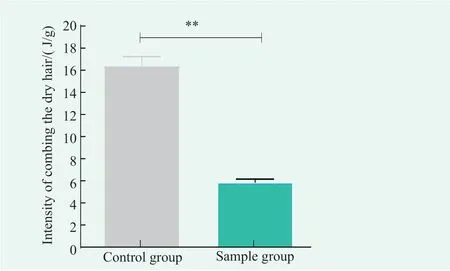
Figure 2. Intensity comparison diagram
2.3.2 Work of combing the dry hair
As shown in Figure 3,compared with the control group without prinsepia utilis oil,the dry combing work of the testing groups (applied prinsepia utilis oil) was significantly reduced,indicating that the prinsepia utilis oil had the effect of easy carding.

Figure 3. Comparison of work of combing the dry hair
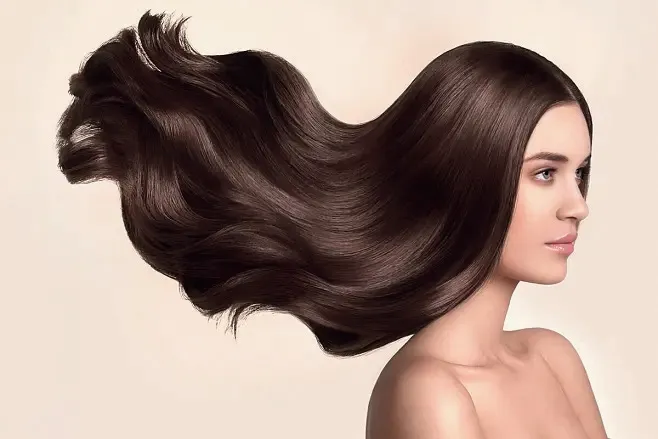
2.4 Efficacy evaluation result of prinsepia utilis oil for anti-tangle of hair bundle
2.4.1 Comparison of results of wet comb strength test
As shown in Figure 4,compared with the control group without prinsepia utilis oil,the wet comb strength of the testing groups (applied prinsepia utilis oil) was significantly reduced,indicating that the prinsepia utilis oil had anti-tangling effect.

Figure 4. Comparison of intensity of combing the wet hair
2.4.2 Work of combing the wet hair
As shown in Figure 5,compared with the control group without prinsepia utilis oil,the wet combing work of the testing groups (applied prinsepia utilis oil) was significantly reduced,indicating that the prinsepia utilis oil had anti-tangling effect.
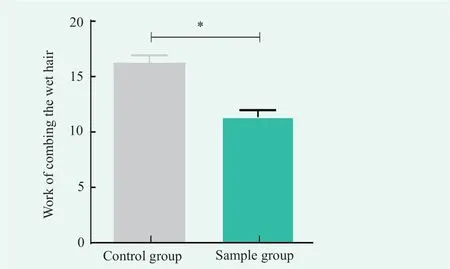
Figure 5. Comparison of work of combing the wet hair
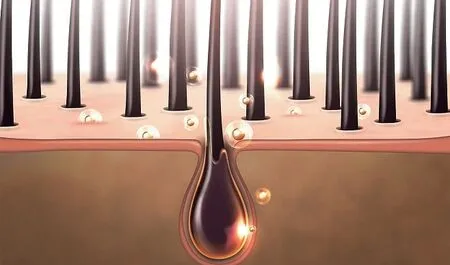
2.5 Efficacy evaluation result of prinsepia utilis oil for smoothing of hair bundle
2.5.1 The result of friction work test
As shown in Figure 6,the friction work of the testing groups (applied prinsepia utilis oil) has decreased significantly compared with the control group without prinsepia utilis oil,indicating that the hair bundle could be easily combed after the use of green thorn fruit oil.
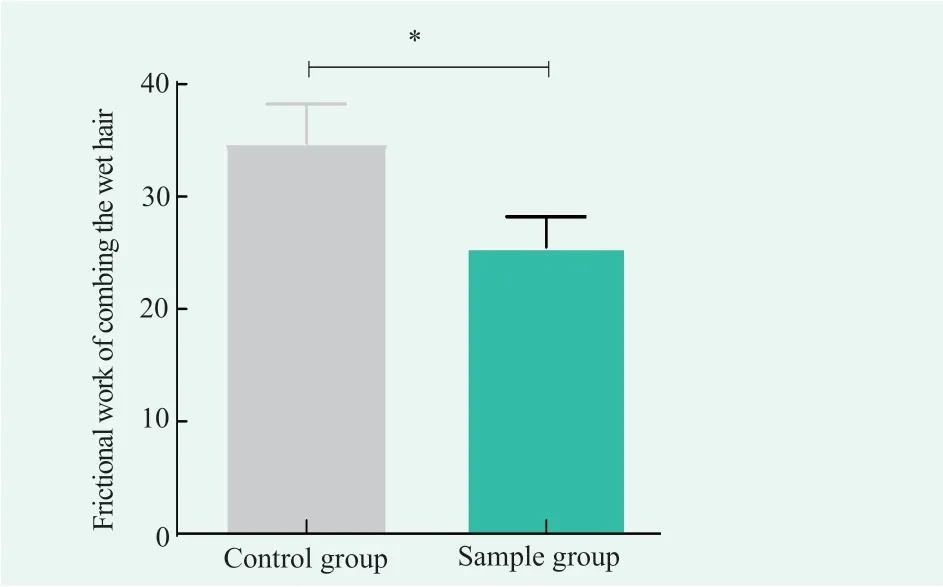
Figure 6. Test results comparison of frictional work
2.6 Efficacy evaluation result of PRINSEPIA UTILIS OIL for repairing hair scales of hair bundle
2.6.1 The results are as shown in Figure 7
As can be seen from Figure 7,normal hair scales layer and overlap from the root to the end of hair shaft like the fish scales layer from head to tail.When the hair is damaged,the tail of the hair scales will curl up and detach from the hair.The greater the degree of curling,the greater the degree of opening of the hair scales.In more severe cases,the entire hair scale will detach from the hair.

Figure 7. Hair scale repair test results
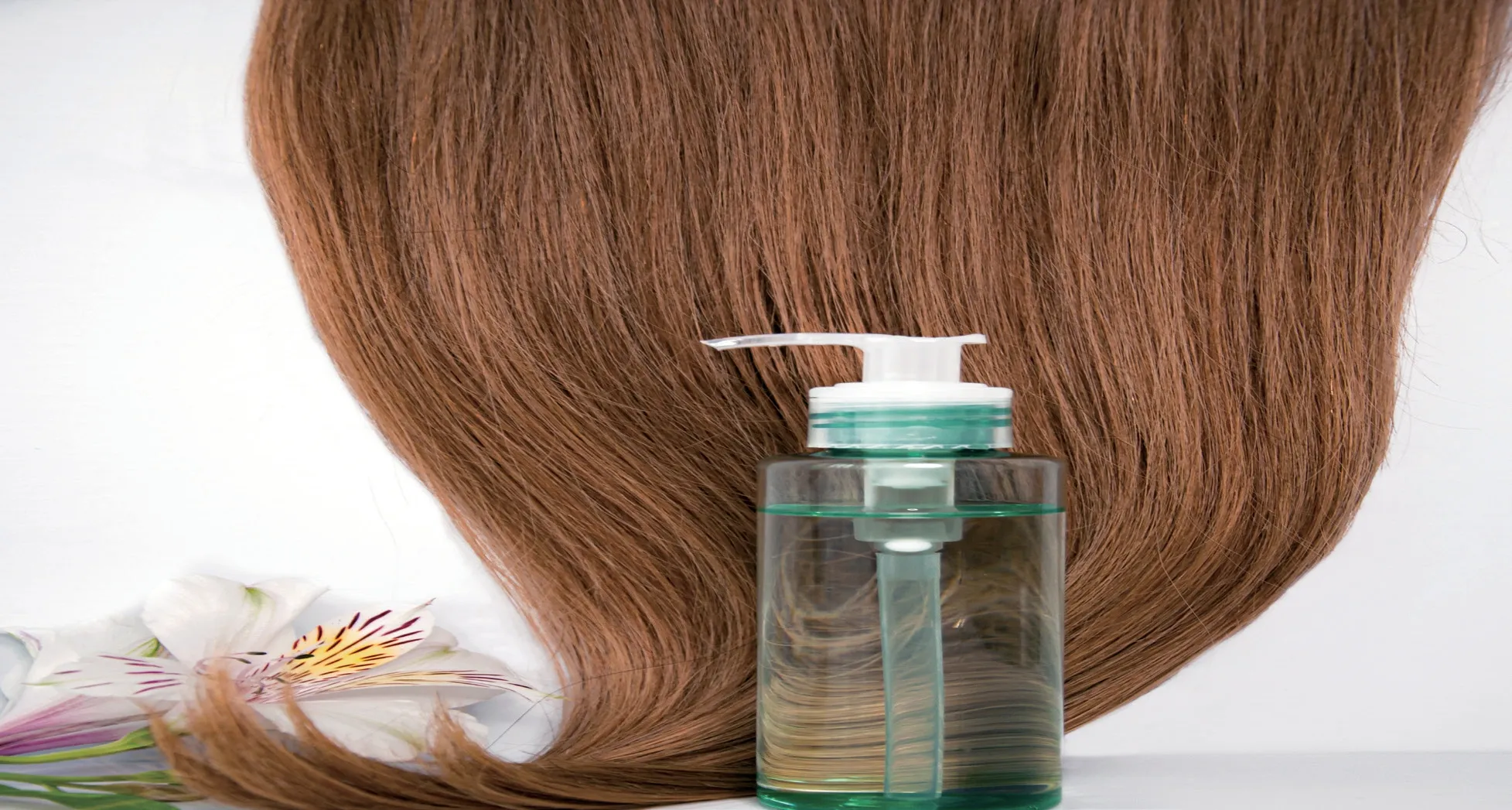
The surface of normal hair scales is relatively smooth,and normal hair scales tightly overlaps over the hair shaft,giving the hair a smooth and shiny appearance.When the hair scales are curl up to an opening state and detach from the hair shaft,the hair will become rough and lose its luster.
After the treatment of testing sample (PRINSEPIA UTILIS OIL),the opening degree of hair scales relatively decreased,no detached hair scales were observed;After the treatment of reference material,the opening state of hair scales showed no significant variation.no detached hair scales were observed.
3 Conclusion
Silicone oil is a commonly used raw materialin the field of skin care and hair care.It is insolublein water and is not easily degraded,and it is easy to accumulate on the skin and hair[5].Long-term use of hair care products containing silicone oil will lead to dry,greasy and heavy hair,and its accumulation effect will also lead to limited scalp respiration and nutrient absorption,which will lead to scalp malnutrition and hair loss[6].Therefore,non-silicone oil washing products will become a huge market demand and development direction in the future.
With the continuous development of the market,the intensification of the fierce competition and the further improvement of consumer demand and the refinement of functional requirements,the development of shampoo and hair care products with new performance and new functions has been the trend of the times.Natural vegetable oil contains more fatty acids and nutrients which can meet the needs of modern hair shampoo and scalp care products with their characters such as natural,nutritional,mild,functional and convenient.Nowadays,excessive perming,dyeing of hair and external stimuli can easily cause a certain degree of damage to hair surface.Studies have found that avocado oil has strong permeability and can effectively fix the damage of hair scales on the surface of hair.Argan kernel oil,also known as Moroccan argan oil,can repair damaged hair in time because it contains more unsaturated fatty acids[7].In addition,the high temperature of daily hair drying using a hair dryer will also affect the surface and internal structure of the hair.In this study,differential thermal scanning calorimetry (DSC) analysis showed that prinsepia utilis oil had a repairing effect on hair alpha keratin damage caused by hot blowing.According to the results of electron microscope scanning images,it can be seen that prinsepia utilis oil has a repairing effect on the hair scales (the closure degree of the hair scales)of the damaged hair bundles caused by the hair dryer.In summary,the above results indicates that prinsepia utilis oil has the effect of resisting and repairing the damage caused by the high temperature of the hair dryer.The condition of the hair scales of treated hair bundles was better than that of the control group,indicating that the oil had the effect of repairing the hair scales damage caused by other factors.
At present,in existing studies,the hair care effects of different vegetable oils are completely different.For example,Jojoba seed oil can effectively reduce the loss of moisture in hair,and has a soothing and moisturizing effect on hair[8].Coconut oil is richin a variety of unsaturated fatty acids,which can be absorbed by hair quickly,thus to smooth the hair[9].In this study,the friction work of the hair bundle treated with prinsepia utilis oil was significantly reduced compared with the control group sample (P<0.05),indicating that the test sample had a smooth effect,and the improvement rate could reach 26.50%.
In addition to the softening and repairing effects of common natural vegetable oil on hair,this study also tested the intensity of work and frictional work of dry combing and wet combing of hair bundles after using prinsepia utilis oil.And the results of both tests showed significant reduction effect,indicating that prinsepia utilis oil has the effect of improving the easiness of combing and anti-tangling.In conclusion,the prinsepia utilis oil used in this study has a good performance in anti-tangling,easy-combing and repairing hair scales.It can be seen that natural vegetable oil,prinsepia utilis oil has a wide range of functions in hair care products,which can meet the needs of the market.On the basis of existing research,the mechanism of multiple excellent hair care effects of prinsepia utilis oil still needs to be further studied and more comprehensive analysis,so as to continuously promote the development and application of natural vegetable oil.
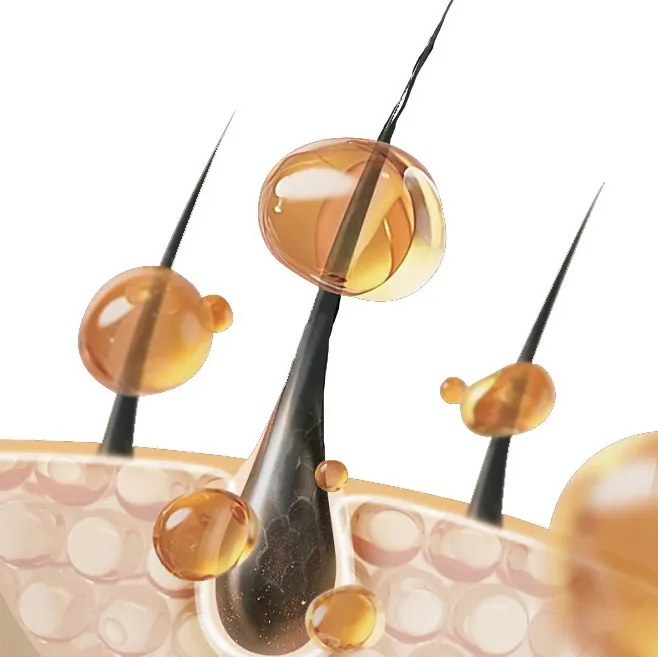
 China Detergent & Cosmetics2023年4期
China Detergent & Cosmetics2023年4期
- China Detergent & Cosmetics的其它文章
- The 2023 (12th) National Sulfonation/Ethoxylation Technology and Market Seminar was Held
- The 3rd Summit Forum on Amino Acid Surfactant was Held
- The 2023 (14th) China Daily Chemical Industry Forum was Held
- In Vitro Study on the Soothing and Oil Control Efficacy of P-Hydroxyacetophenone
- In Vivo Study of a Natural Whitening Agent
- Study on the Effect and Mechanism of Green Plum Citron Double Strain Fermentation Filtrate on Skin Barrier
